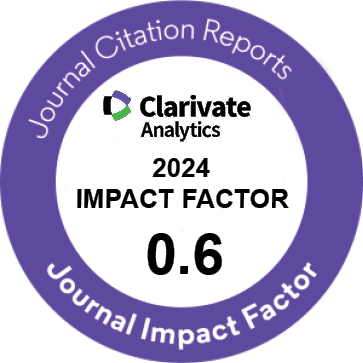| Original Article | |
| Evaluating Women’s Childbirth Experiences: A Cross-sectional Study From Iran | |
| Samiyeh Kazemi1, Farzaneh Pazandeh2,3, Sedigheh Sedigh Mobarakabadi3, Sepideh Hajian3, Ali Montazeri4, Maryam Mousavi5 | |
| 1Student Research Committee, Department of Midwifery and Reproductive Health, School of Nursing and Midwifery, Shahid Beheshti University of Medical Sciences, Tehran, Iran 2/sup>School of Health Sciences, University of Nottingham, Nottingham NG7 2RD, UK 3Midwifery and Reproductive Health Research Center, School of Nursing and Midwifery, Shahid Beheshti University of Medical Sciences, Tehran, Iran 4Population Health Research Group, Health Metrics Research Center, Iranian Institute for Health Sciences Research, Tehran, Iran 5Department of Biostatistics, Faculty of Medical Sciences, Tarbiat Modares University, Tehran, Iran |
|
|
DOI: 10.15296/ijwhr.2023.44 Viewed : 2866 times Downloaded : 2947 times. Keywords : Childbirth, Experience, Women, Iran |
|
| Full Text(PDF) | Related Articles | |
| Abstract | |
Objectives: The experience of childbirth is a special event in women’s life, and it is an essential indicator for assessing the quality of care. This study aimed to evaluate women’s experiences of their own capacity, professional support, participation and perceived safety during labour and childbirth in a public hospital in Mazandaran (North of Iran). Materials and Methods: A cross-sectional study was conducted with 300 low-risk postpartum women who gave birth to single, full-term (37-42 weeks) and healthy babies with no complications. Women were interviewed 4-12 weeks after birth using the Iranian version of the childbirth experience questionnaire (CEQ). Results: The mean CEQ score was 45.08 ± 4.52. The highest and lowest scores were associated with the “own capacity” (17.32±2.63) and “participation” (5.87±1.74) domains, respectively, among the childbirth experience dimensions. Women felt capable and had confidence in their bodies for giving birth; however, they had little control over labour and childbirth. Conclusions: To provide high-quality childbirth care and improve labouring women’s experiences in maternity services, it is recommended that the midwifery model of care be used for low-risk women. Preserving natural process of childbirth by promoting evidence-based and respectful childbirth care should be considered in any intervention for change. |
Cite By, Google Scholar
Google Scholar
PubMed
Online Submission System
 IJWHR ENDNOTE ® Style
IJWHR ENDNOTE ® Style
 Tutorials
Tutorials
 Publication Charge
Women's Reproductive Health Research Center
About Journal
Publication Charge
Women's Reproductive Health Research Center
About Journal
Aras Part Medical International Press Editor-in-Chief
Arash Khaki
Mertihan Kurdoglu Deputy Editor
Zafer Akan






















